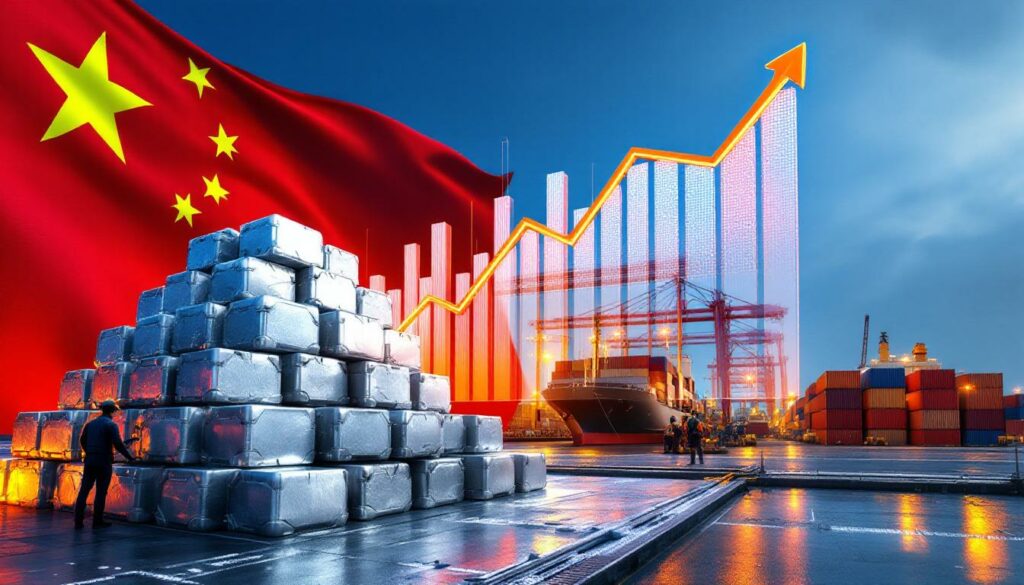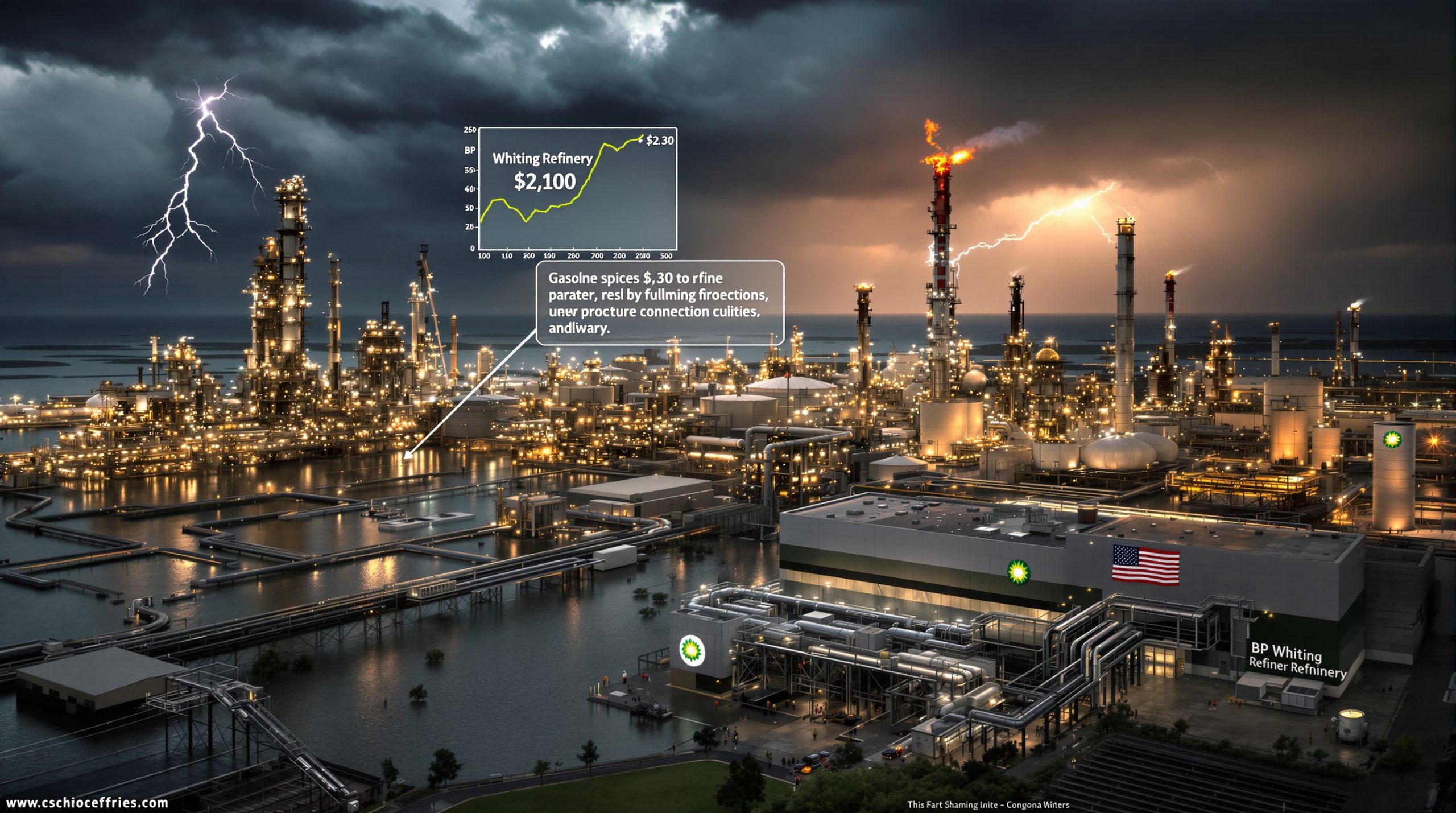Understanding China's Aluminum Export Surge: May 2025 Analysis
China's primary aluminum export market has undergone a dramatic transformation in 2025, with May figures showcasing unprecedented growth. This comprehensive analysis examines the factors driving this remarkable surge, the evolving trade patterns, and the potential implications for global aluminum markets.
What's Driving the Dramatic Increase in China's Primary Aluminum Exports?
Record-Breaking Export Growth in May 2025
China's primary aluminum exports have reached extraordinary levels in May 2025, setting new records and signaling a significant shift in global aluminum trade dynamics. According to data from China Customs, domestic primary aluminum exports in May totaled approximately 32,000 metric tons, representing a remarkable 136.9% increase from April 2025.
Even more striking is the year-over-year comparison, with May 2025 exports showing an astonishing 376.4% growth compared to May 2024. This dramatic acceleration indicates fundamental changes in market conditions that have transformed China's position in global aluminum trade.
The cumulative export volume for January-May 2025 reached approximately 67,000 metric tons, showing a substantial 215.6% increase compared to the same period in 2024. This consistent growth pattern throughout early 2025 suggests structural rather than temporary factors are driving the export surge.
Market Insight: The unprecedented growth rate in China's primary aluminum exports represents one of the most significant shifts in global aluminum trade patterns of the past decade, surpassing even the notable export increases seen during 2017-2018.
Key Export Patterns by Aluminum Content
The composition of China's aluminum exports reveals important trends in market demand and producer strategy. Analysis of export data classified by aluminum content shows varying growth rates across different purity categories.
High-purity aluminum grades (≥99.7% aluminum content) have experienced the strongest growth, accounting for approximately 65% of May 2025 exports. This category is primarily targeted toward high-specification applications in electronics, aerospace, and automotive industries.
Standard-grade aluminum (99.0-99.6% aluminum content) represents approximately 30% of May exports, primarily destined for construction, packaging, and general manufacturing applications. The remaining 5% consists of specialized alloys tailored for specific industrial applications.
| Aluminum Grade | % of May 2025 Exports | Primary Applications | YoY Growth Rate |
|---|---|---|---|
| ≥99.7% (High-purity) | 65% | Electronics, aerospace, automotive | 412.3% |
| 99.0-99.6% (Standard) | 30% | Construction, packaging, general manufacturing | 309.7% |
| Specialized alloys | 5% | Industry-specific applications | 287.5% |
Price premiums for high-purity aluminum have reached record levels, with spreads between high-purity and standard grades widening to $180-220 per metric ton in major markets. This premium expansion has incentivized Chinese producers to prioritize higher-grade production for export markets.
How Are Trade Patterns Evolving in the Aluminum Market?
Trade Mode Analysis
The structure of China's aluminum export channels has evolved significantly in 2025, with important shifts in the distribution between general trade and processing trade channels.
General trade, representing direct export transactions, accounts for approximately 72% of May 2025 aluminum exports. This represents a substantial increase from the 58% share seen in May 2024, indicating a shift toward more straightforward export arrangements with fewer regulatory complications.
Processing trade, involving the import of materials for processing and re-export, has declined to 23% of May exports. The remaining 5% of exports flow through bonded warehouses and other specialized trade arrangements.
- General trade channels: 72% of May exports (↑14% from May 2024)
- Processing trade channels: 23% of May exports (↓11% from May 2024)
- Bonded warehouse and other channels: 5% of May exports (↓3% from May 2024)
These shifts reflect changing regulatory environments and the growing profitability of direct export arrangements. General trade channels typically offer 8-12% higher profit margins compared to processing trade, driven by streamlined logistics and reduced administrative requirements.
The decline in bonded warehouse transactions suggests reduced speculative positioning and greater emphasis on direct end-user deliveries, indicating more stable demand patterns.
Geographic Distribution of Export Destinations
The destination map for China's aluminum exports has diversified significantly in 2025, with notable growth in emerging markets alongside traditional buyers.
Southeast Asian nations have emerged as the leading destination region, accounting for approximately 42% of May 2025 exports. This represents a substantial increase from 28% in May 2024, driven primarily by manufacturing growth in Vietnam, Thailand, and Malaysia. The region has become a key market for aluminium scrap price assessments as recycling infrastructure develops alongside primary metal consumption.
European markets remain significant at 24% of May exports, though this represents a decline from 32% in the previous year. North American destinations account for 18%, while other Asian markets (excluding Southeast Asia) comprise 12% of exports.
| Export Destination | % of May 2025 Exports | YoY Change | Key Importing Countries |
|---|---|---|---|
| Southeast Asia | 42% | ↑14% | Vietnam, Thailand, Malaysia |
| Europe | 24% | ↓8% | Germany, Italy, Poland |
| North America | 18% | ↑3% | United States, Mexico |
| Other Asia | 12% | ↓6% | South Korea, Japan, Taiwan |
| Rest of World | 4% | ↓3% | Various |
Vietnam has emerged as the single largest country destination, accounting for 18% of May exports and showing 450% year-over-year growth. This dramatic increase is driven by Vietnam's expanding aluminum-intensive manufacturing sector and its positioning as a regional processing hub.
The geographic diversification reflects strategic efforts by Chinese exporters to reduce concentration risk and develop new market opportunities, particularly in regions with growing manufacturing capacity and infrastructure development.
What Factors Are Influencing the Export Surge?
Global Market Dynamics
Several international market factors have converged to create exceptionally favorable conditions for Chinese aluminum exports in 2025.
Global aluminum prices have maintained a significant premium over Chinese domestic prices throughout early 2025, creating profitable arbitrage opportunities for exporters. The average LME-SHFE spread reached $320-380 per metric ton in May 2025, well above the typical breakeven threshold of $250 for export profitability.
Supply constraints in competing producer regions have created market gaps that Chinese exporters have rapidly filled. Production disruptions in Europe, where energy costs have pushed multiple smelters into curtailment, have been particularly impactful. European primary aluminum production capacity utilization fell to 68% in May 2025, down from 83% a year earlier.
Market Perspective: "The combination of elevated international prices and production constraints outside China has created an unprecedented window of opportunity for Chinese aluminum exporters. The sustainability of this export surge depends largely on whether these global supply-demand imbalances persist beyond 2025." – Shanghai Metal Market Analysis, May 2025
Currency dynamics have further enhanced export competitiveness, with the Chinese yuan maintaining a relatively stable position against the US dollar while competing producer currencies have strengthened. This currency advantage has effectively reduced the relative cost of Chinese aluminum in international markets by 5-8% compared to May 2024.
Demand growth in key manufacturing sectors globally, particularly in electric vehicles, renewable energy infrastructure, and electronics, has increased aluminum consumption by an estimated 6.2% year-over-year. This demand growth has outpaced non-Chinese supply expansion, creating market gaps that Chinese exporters have rapidly filled.
Domestic Production Landscape
China's domestic aluminum industry has undergone significant structural changes that have enhanced its export competitiveness and available supply.
Production capacity utilization rates in China have reached approximately 92% in May 2025, reflecting strong operational performance despite periodic power supply challenges. This high utilization rate has been supported by capacity expansions in regions with access to renewable energy sources, particularly in southwestern provinces.
Energy policy developments have significantly impacted the industry evolution trends and regional distribution. Reduced electricity costs for smelters powered by renewable energy have created production cost advantages of $150-200 per metric ton compared to coal-powered facilities. This has accelerated the shift of production capacity toward hydropower-rich regions.
- Coal-powered smelting capacity: 53% of total (↓12% from 2024)
- Renewable-powered smelting capacity: 47% of total (↑12% from 2024)
Raw material availability has improved significantly, with domestic alumina production increasing by 8.3% year-over-year. This has reduced China's reliance on imported alumina and stabilized input costs for primary aluminum producers.
Environmental regulations have created a two-tier production landscape, with newer, cleaner smelters enjoying both cost and regulatory advantages. These modern facilities have captured the majority of production growth and export opportunities, while older facilities increasingly focus on domestic market segments with less stringent quality requirements.
Government policy shifts, including reduced export taxation and streamlined customs procedures, have removed previous barriers to aluminum exports. These changes reflect broader strategic positioning to maintain global market share in value-added manufacturing sectors.
What Are the Implications for Global Aluminum Markets?
Price Impact Assessment
The surge in Chinese aluminum exports has triggered significant price effects across global markets, with varying impacts across different regions and market segments.
International benchmark prices have shown surprising resilience despite increased Chinese export volumes. LME aluminum prices averaged $2,850-2,950 per metric ton in May 2025, representing only a modest 2.3% decline from April levels. This stability suggests that strong underlying demand has largely absorbed the additional supply.
Regional price differentials have widened significantly, with premium adjustments reflecting the uneven distribution of Chinese exports:
| Region | May 2025 Premium ($/mt) | Change vs. May 2024 | Impact of Chinese Exports |
|---|---|---|---|
| US Midwest | $450-490 | ↓15% | Moderate supply increase |
| European Rotterdam | $310-350 | ↓28% | Significant supply increase |
| Japan CIF | $130-150 | ↓42% | Major supply increase |
| Southeast Asia | $90-110 | ↓55% | Dominant supply increase |
These regional variations reflect both the geographic distribution of Chinese exports and the differing levels of trade barriers and logistics costs across markets.
Price volatility has increased despite relatively stable average prices, with daily price movements in May 2025 showing 40% higher standard deviation compared to May 2024. This increased volatility reflects market uncertainty about the sustainability of Chinese export volumes and potential policy responses from other producing nations.
Long-term price projections remain mixed, with analysts divided on whether the current export surge represents a temporary phenomenon or a structural shift in global market dynamics. The consensus view suggests prices will stabilize at $2,700-2,800 per metric ton by late 2025 if export volumes maintain their current trajectory.
Supply Chain Considerations
The influx of Chinese primary aluminum has triggered significant adjustments throughout global aluminum supply chains, with varied impacts across different market segments.
Downstream fabricators have responded to increased aluminum availability by reducing inventory levels and shortening procurement cycles. Average inventory days among major fabricators decreased from 45-55 days in May 2024 to 30-40 days in May 2025, reflecting greater confidence in supply availability and reduced price risk.
International buyers have adopted more opportunistic purchasing strategies, with increased use of spot market transactions rather than long-term contracts. This shift has been particularly pronounced in Southeast Asian markets, where spot transactions now represent approximately 65% of primary aluminum procurement, up from 45% a year earlier.
Substitution effects between primary and secondary (recycled) aluminum markets have become increasingly evident, with price-sensitive applications shifting toward primary aluminum as the price differential narrows. This has placed pressure on secondary aluminum producers, particularly in markets with direct exposure to Chinese exports.
Supply Chain Insight: "The rapid increase in Chinese primary aluminum availability has fundamentally altered procurement strategies across Asia. Buyers now operate with greater flexibility and reduced inventory buffers, reflecting a structural shift in market power dynamics toward consumers." – Shanghai Metal Market Supply Chain Analysis, May 2025
Logistics challenges have emerged as a significant constraint on the export surge, with container availability and port congestion limiting further acceleration of export volumes. Average shipping times from Chinese ports to Southeast Asian destinations increased by 3-5 days in May 2025 compared to early 2025, reflecting these logistical pressures.
Warehousing patterns have shifted notably, with a decrease in LME-registered warehouse stocks despite increased global supply. This apparent contradiction reflects the direct flow of Chinese exports to end-users rather than into exchange-monitored inventory, suggesting strong underlying consumption rather than speculative stockpiling.
FAQ: Understanding China's Aluminum Export Trends
What is driving the sudden increase in Chinese aluminum exports?
The dramatic surge in China's domestic primary aluminum exports in May reflects a convergence of multiple favorable factors rather than a single driver.
Domestic oversupply conditions have emerged in specific aluminum grades and regions, with production capacity growing faster than domestic consumption in the first half of 2025. This has created available volume for export markets without significantly impacting domestic supply adequacy.
International price arbitrage opportunities have reached exceptional levels, with the spread between international and domestic prices consistently exceeding the cost of export logistics and tariffs. This fundamental economic incentive has been the primary catalyst for export growth.
Policy changes have removed previous obstacles to aluminum exports, with simplified customs procedures and reduced administrative requirements. These regulatory adjustments have lowered the threshold for export participation, particularly for medium-sized producers previously focused exclusively on domestic markets.
Production cost advantages have widened compared to international competitors, particularly European and North American producers facing higher energy and environmental compliance costs. The average all-in production cost for Chinese primary aluminum reached approximately $2,100-2,250 per metric ton in May 2025, providing a substantial margin against international prices.
Strategic market positioning by Chinese producers has evolved, with greater emphasis on establishing stable international market presence rather than opportunistic export activities. This reflects longer-term objectives of building global aluminum value chains with Chinese producers at their core.
How might this export trend affect global aluminum prices?
The impact of sustained Chinese export growth on global aluminum prices will likely be nuanced rather than uniformly negative, with several counterbalancing factors moderating price effects.
Short-term price pressure is most evident in regional premiums rather than benchmark prices, with premium erosion of 15-55% across major markets. This pattern suggests that the market is absorbing additional supply through premium adjustments rather than fundamental price corrections.
Regional impact variations will likely persist, with markets receiving the highest proportion of Chinese exports experiencing the most significant price effects. Southeast Asian markets have shown the most pronounced premium compression, while more distant markets with higher logistics costs and trade barriers have been less affected.
Several factors may limit price impacts despite increased supply:
- Accelerating demand growth in renewable energy and electric vehicle sectors
- Production curtailments by high-cost producers in Europe and North America
- Strategic stockpiling by consumers and governments concerned about future supply security
- Potential export restrictions that could be implemented by Chinese authorities if prices decline too rapidly
Historical precedents from similar export surges in 2017-2018 suggest that markets typically reach new equilibrium levels within 4-6 months, with price impacts moderating after initial adjustments. During that previous episode, global prices declined by 12-15% before stabilizing once supply chain participants adjusted their strategies.
Producing regions outside China may respond with tariffs impact analysis showing potential protective measures to shield domestic industries if the export surge continues, potentially limiting long-term price impacts through artificial market segmentation.
Is this export growth sustainable through 2025-2026?
The sustainability of China's aluminum export surge depends on several interconnected factors that will determine whether current volumes represent a temporary phenomenon or a lasting shift in trade patterns.
Production capacity constraints appear minimal in the near term, with approximately 2-3 million metric tons of additional capacity expected to come online in China during 2025-2026. This expansion could support continued export growth if other enabling factors remain favorable.
Raw material supply considerations present few immediate constraints, with domestic alumina production capacity growing in parallel with primary aluminum. However, bauxite import dependencies create potential vulnerability to supply disruptions or trade restrictions.
Energy availability and cost projections remain favorable for Chinese producers, particularly those in renewable energy-rich regions. The ongoing shift of production capacity toward hydropower and solar-powered facilities is expected to maintain or even enhance cost competitiveness through 2026.
Policy risk represents the most significant uncertainty for export sustainability. Historical patterns suggest Chinese authorities may implement export restrictions if domestic supply adequacy concerns emerge or if international trade tensions escalate in response to the export surge.
Demand sustainability in key importing regions appears robust through 2025-2026, supported by infrastructure development, energy transition investments, and manufacturing growth in Southeast Asia. However, potential economic slowdowns in major economies could reduce aluminum consumption and diminish export opportunities.
Future Outlook for China's Aluminum Export Market
Potential Growth Scenarios
The trajectory of China's aluminum exports through the remainder of 2025 and into 2026 could follow several distinct paths depending on market conditions and policy developments.
Projected export volumes for the second half of 2025 suggest continued strong performance, with monthly exports likely averaging 30,000-35,000 metric tons under baseline scenarios. This would represent sustained year-over-year growth exceeding 250% but more moderate sequential growth compared to the first half of the year.
Year-end cumulative exports for 2025 are forecast to reach 330,000-
Ready to Capitalise on Major Mineral Discoveries?
Gain instant notifications on significant ASX mineral discoveries with Discovery Alert's proprietary Discovery IQ model, transforming complex mineral data into actionable investment insights. Explore historic examples of exceptional market returns on Discovery Alert's dedicated discoveries page and begin your 30-day free trial today.




